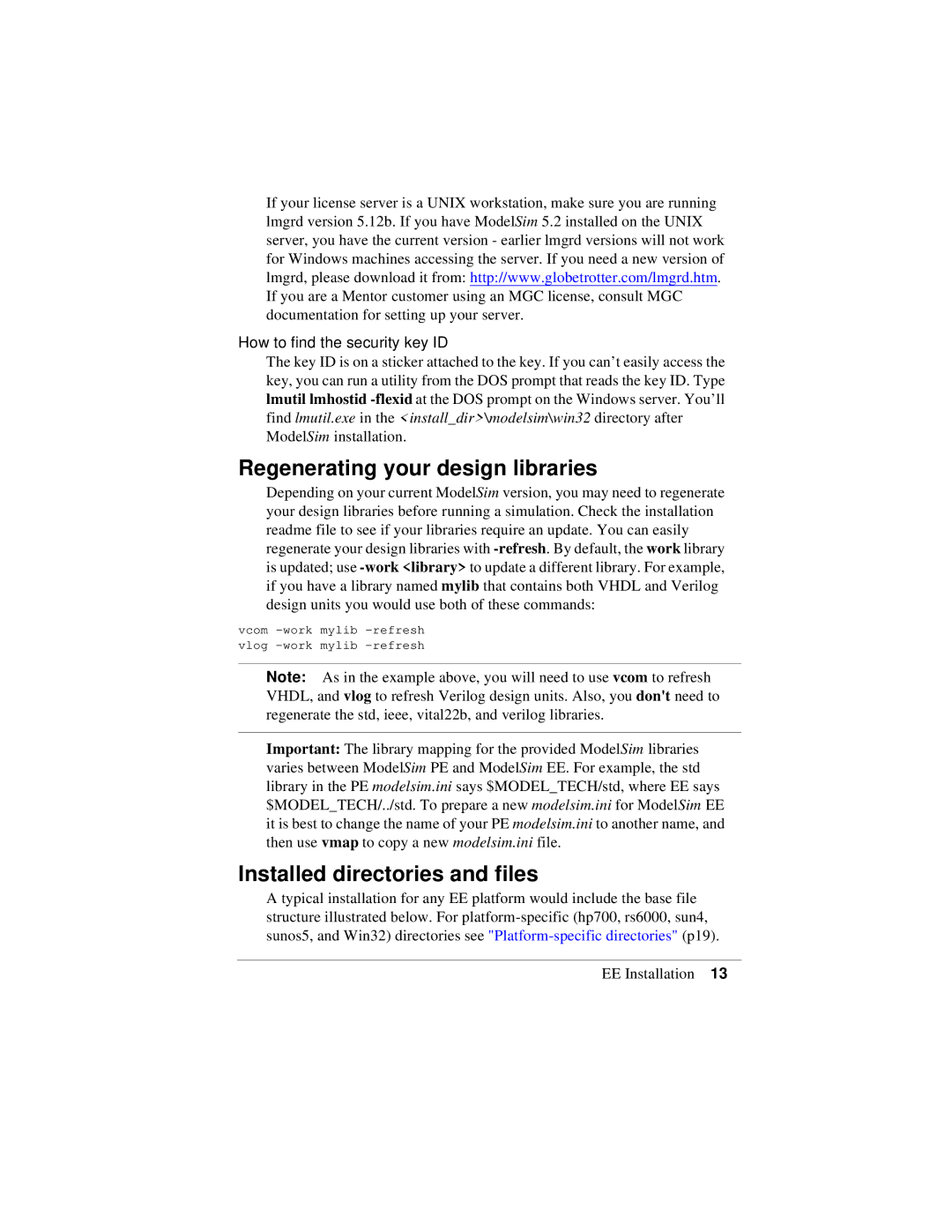
If your license server is a UNIX workstation, make sure you are running lmgrd version 5.12b. If you have ModelSim 5.2 installed on the UNIX server, you have the current version - earlier lmgrd versions will not work for Windows machines accessing the server. If you need a new version of lmgrd, please download it from: http://www.globetrotter.com/lmgrd.htm. If you are a Mentor customer using an MGC license, consult MGC documentation for setting up your server.
How to find the security key ID
The key ID is on a sticker attached to the key. If you can’t easily access the key, you can run a utility from the DOS prompt that reads the key ID. Type lmutil lmhostid
Regenerating your design libraries
Depending on your current ModelSim version, you may need to regenerate your design libraries before running a simulation. Check the installation readme file to see if your libraries require an update. You can easily regenerate your design libraries with
vcom
Note: As in the example above, you will need to use vcom to refresh VHDL, and vlog to refresh Verilog design units. Also, you don't need to regenerate the std, ieee, vital22b, and verilog libraries.
Important: The library mapping for the provided ModelSim libraries varies between ModelSim PE and ModelSim EE. For example, the std library in the PE modelsim.ini says $MODEL_TECH/std, where EE says $MODEL_TECH/../std. To prepare a new modelsim.ini for ModelSim EE it is best to change the name of your PE modelsim.ini to another name, and then use vmap to copy a new modelsim.ini file.
Installed directories and files
A typical installation for any EE platform would include the base file structure illustrated below. For
EE Installation 13
